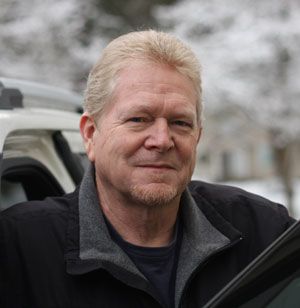Readers’ pet peeves
I’m regularly a “sounding board” for readers’ pet driving peeves. A couple good examples of these irksome driving deeds made it to my email inbox last week.
Reader B.L. griped, “Last evening as I drove home, a huge pickup truck with those new flashlight-sized headlights tailgated me for several miles before turning off I-90. He went up the ramp just west of the Veterans Memorial Bridge, giving me the opportunity to see what I expected: A four-wheeler [ATV] in the box [pickup bed]. That weight was enough to make his headlights focus high enough to blind oncoming traffic as well as anyone close in front.”
His complaint is reasonable. Whether misaimed, left on high beam, or directed at your eyes because of pickup cargo, blinding light is a nuisance to drivers.
B.L. directed more thought to this aggravation, adding “The above situation is by no means the first such experience, and it will not be the last. It seems that every pickup owner who has a four-wheeler in the box during the summer also has a snowmobile or even a pair of snowmobiles in the winter. That translates into blinding headlights even when on low beam. There should be a law requiring re-aiming of frontal lights when four-wheelers or snowmobiles are carried.”
Another light-related peeve came from M.C., who commented, “Could you please explain the rules about flashing your high beams at an on-coming vehicle when it appears they have their high beams on? I learned the other morning from a WSP that this practice is illegal, that I should either turn my lights off/on, or turn my gaze away from the roadway, neither of which seems to me to be a safe thing to do. I am in my 50s and was taught that flashing your brights on was acceptable in different circumstances, guess they have changed the rules. Fortunately he did not give me a ticket.
Flashing high beams at oncoming traffic has been frowned upon by law enforcement for years. In 1969, I, like M.C., learned that from a WSP officer. That historical night I flashed a high-beam warning at a forgetful oncoming driver — unfortunately, he was a WSP trooper. He treated me just like M.C. I was not ticketed, but lectured that I should simply direct my gaze toward the right side of the roadway until the offending vehicle passes rather that blinding its driver with a sudden flash.
Since then, I have noted that state driver guides, driving instructors and law enforcement all recommend the procedure of slightly directing your view away from the offending beams when confronted with bright vehicle lighting. Law enforcement has been consistent on this over the years based on my 1969 stop and M.C.’s in 2013.
Regular readers know that I generally disapprove of informal, unofficial communicative signals directed toward other drivers. With no formal standards, such signals are often misconstrued, unseen, or even misinterpreted to have the opposite of the intended meaning. For example, a light flash at a driver waiting to enter the highway could be seen either as a warning to stay put, or as an okay to pull out. Additionally, self-designed signals aimed at directing other drivers may conflict with established rules of the road and right-of-way.
M.C. relayed another grievance, grumbling, “On another subject, please remind your readers that when two adjacent lanes are turning, i.e.Washington St at 2nd Ave, 3rd St at Brown, etc., for each driver to stay in their own lane. I have been cut-off numerous times by drivers in the outside lane cutting the corner when making their turn. There are many of these two lane turn situations in Spokane, most on one-way streets.”
Yes, some people need to learn how to count better when it comes to finding the correct lane to turn into. I’ve written of the proper procedure for making such turns many times, but here’s another reminder: When turning, keep track of and stay in your designated lane. Depart to any desired different lane only after completing the turn in the proper one at a time when you do not interfere with traffic already in that lane.
Readers may contact Bill Love via e-mail at precisiondriving@spokesman.com.
